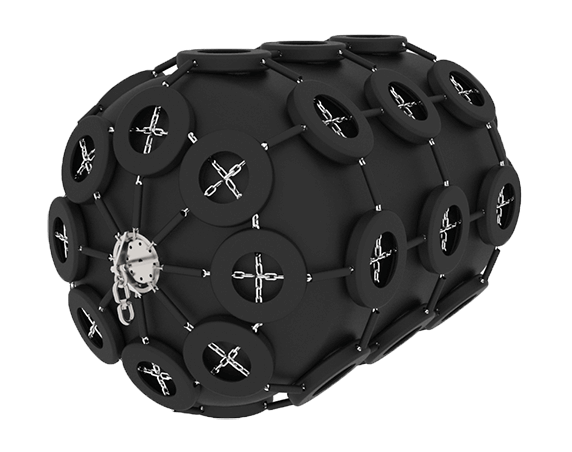Pier Fender Classification
12/12/2023Classification Of Pneumatic Fendders
12/18/2023Structure Of Pneumatic Fenders

The structure of a pneumatic fender usually consists of a shell and a prop ball core. The following is a structural description of a general pneumatic fender:
- Shell: The shell of a pneumatic fender is usually made of soft, wear-resistant materials, such as rubber, polyurethane or PVC. The design of the housing can vary according to specific needs and usage environment, such as spherical, cylindrical or rectangular.
- Core body: The core body of the pneumatic fender is the core part of the pneumatic fender, providing buoyancy and buffering effects. Pneumatic fender cores are usually made of foam, air-filled materials or other highly elastic materials. The material selected for the ball core should have good compression resistance and durability to ensure the stability and service life of the ball.
- Connecting parts: In order to firmly connect the shell and the core of the ball, pneumatic fenders usually use special connecting parts, such as hinges, straps or ropes. These connections can be adjusted to the shape and size of the boat buoy to ensure the integrity and stability of the buoy.
- Auxiliary devices: Some pneumatic fenders can also be equipped with auxiliary devices, such as lights, signs or reflective tapes, to increase the visibility and safety of the ship and berthing balls.
The structural design of pneumatic fenders usually takes into account the buffering and stability when the ship is docked. Different sizes and types of pneumatic fenders may have slightly different construction details, but the general principle is to provide sufficient buoyancy and cushioning to ensure safe contact between the vessel and the dock or shore. When selecting and using pneumatic fenders, be sure to follow relevant specifications and operating guidelines.
